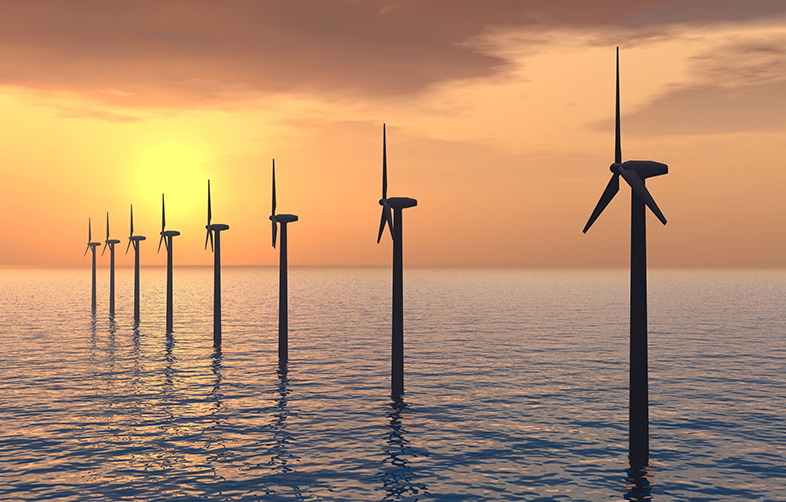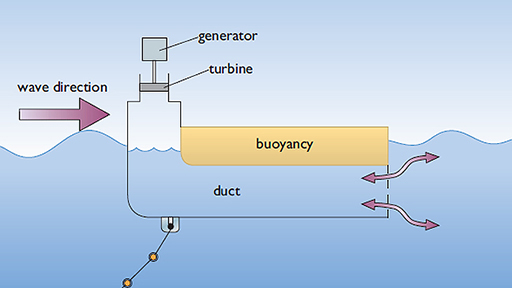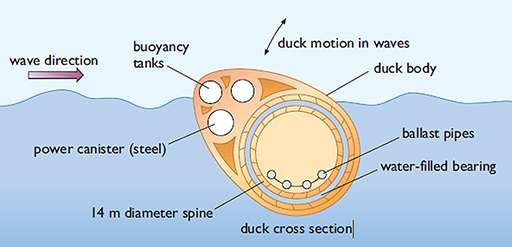3.3 Floating devices
Floating wave energy conversion devices should be able to harvest more energy than fixed, on-shore devices, since the wave power density is greater offshore than in shallow water and there is little restriction to the deployment of large arrays of such devices.
One such device is the Backward Bent Duct Buoy (see Figure 16).
A quarter scale hull achieved over 20 000 hours of operation in live sea trials at the wave energy test site at Spiddal in Ireland. A multi-cell version of the BBDB is under development by Offshore Wave Energy Limited (OWEL), which aims to test a 45 m long 500 kW prototype at the Wave Hub site in Cornwall.
The Edinburgh ‘Duck’ concept (Figure 7.17) was originally envisaged as many cam-shaped bodies linked together on a long flexible floating spine, spanning several kilometres of sea and oriented almost parallel to the principal wave front. The Duck was designed to extract energy by pitching to match the orbital motion of the water particles, as discussed earlier.
To generate power, each cam-shaped body – or ‘duck’ – either moves relative to the spine, producing high pressure in a hydraulic system, or drives a set of gyroscopes mounted in the noses of the ‘ducks’. Matching to the waves can be nearly perfect at one wave frequency, and the efficiency in long waves can be improved by control of the flexure of the spine through its joints. The concept is theoretically one of the most efficient of all wave energy schemes, but it is likely to take a very long time to develop fully the engineering necessary to utilize the concept at full scale.
We will now move on to look at point absorber devices.


